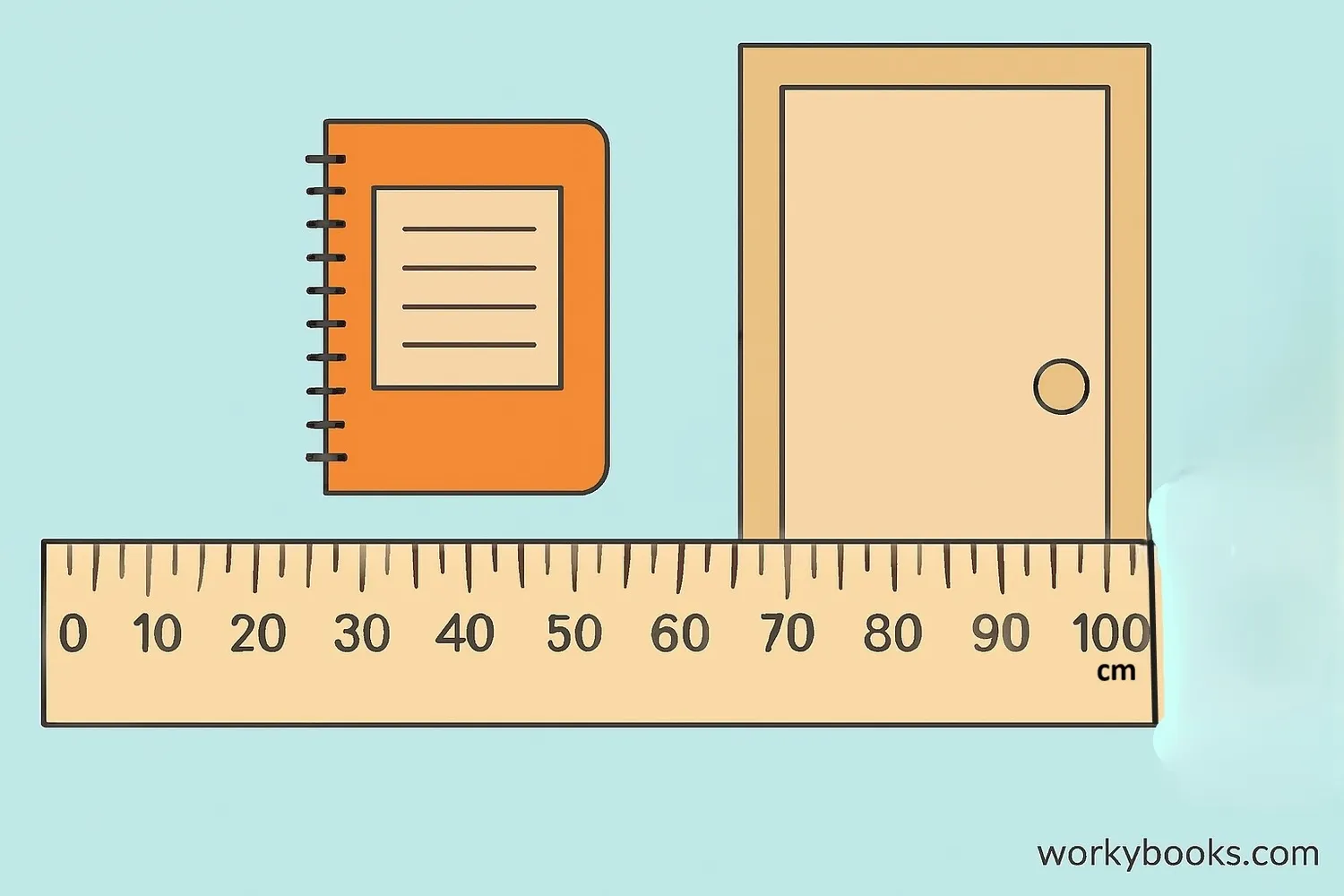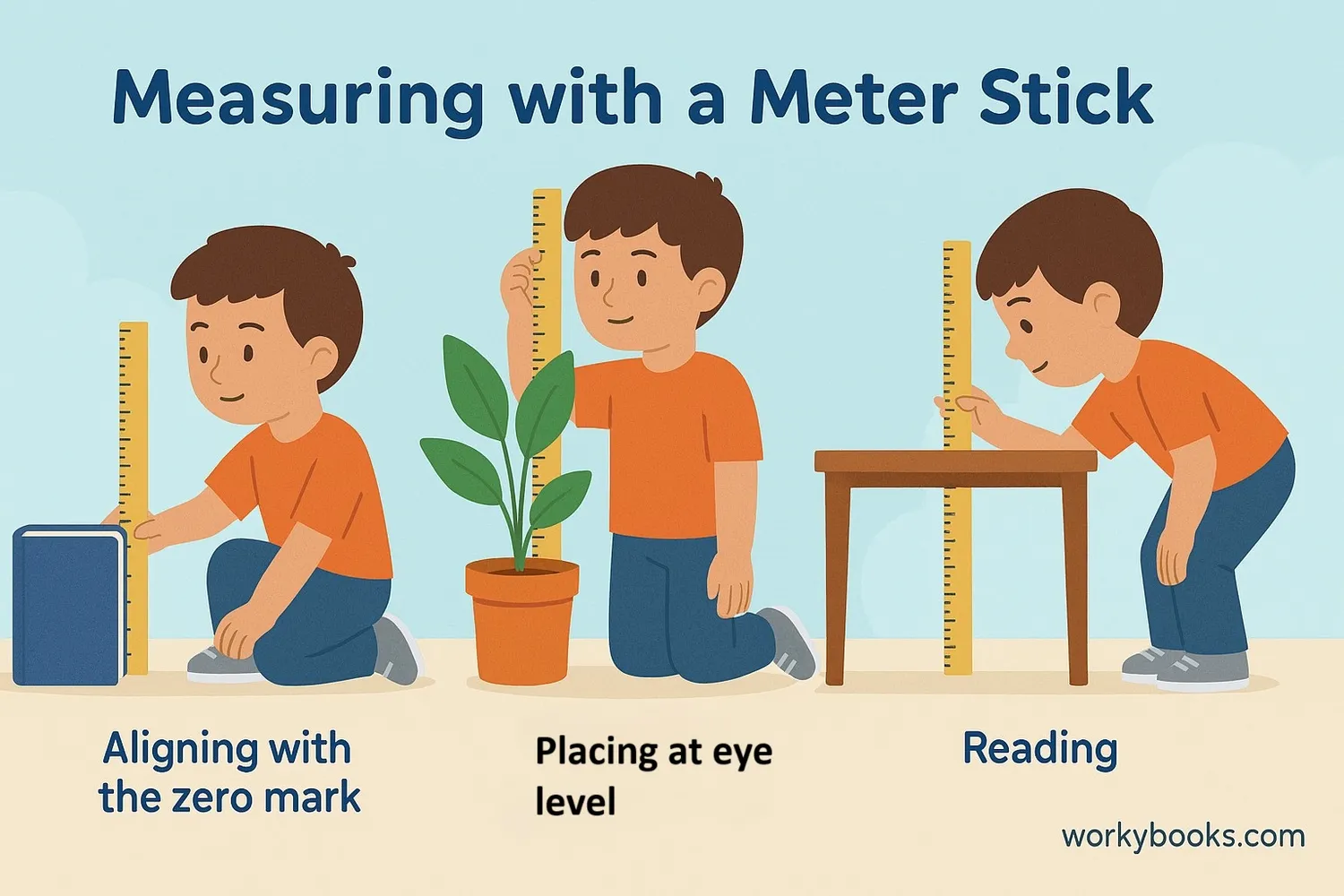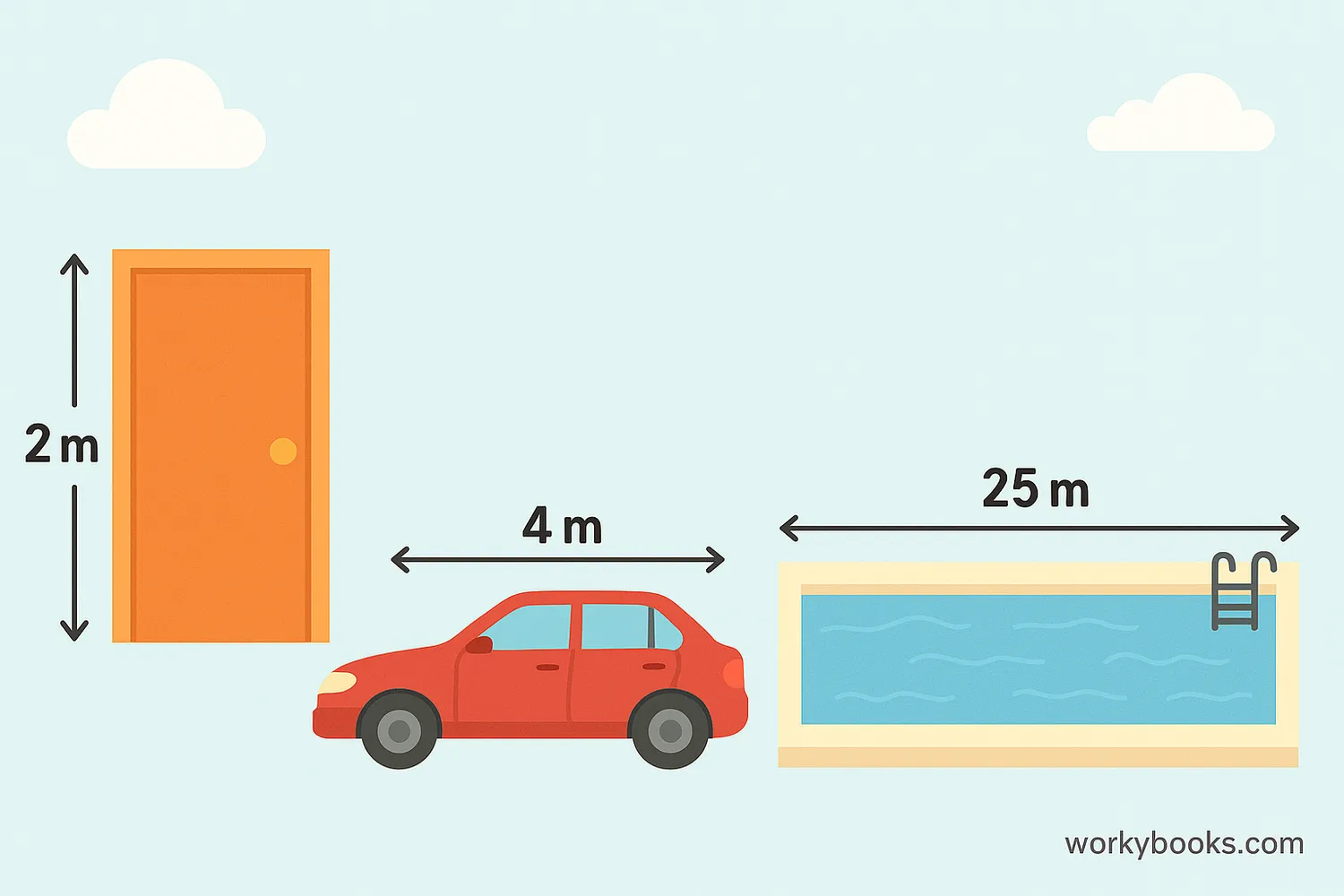Meter (m) - Definition, Examples, Quiz, FAQ, Trivia
Learn about the meter, the standard unit of length in the metric system, with examples and activities
What is a Meter?

A meter (symbol: m) is the standard unit of length in the metric system. It is used to measure how long or how far something is. The metric system is used by most countries around the world because it's based on units of 10, which makes it easy to understand and use.
The meter was originally defined as one ten-millionth of the distance from the Earth's equator to the North Pole. Today, it's defined more precisely as the distance light travels in a vacuum in 1/299,792,458 of a second.
Meters are used to measure many things in our daily lives, from the length of a room to the height of a person. Understanding meters helps us describe and compare the size of objects accurately.
Key Concept
1 meter = 100 centimeters. The meter is the base unit for measuring length in the metric system.
How to Measure Using Meter

Measuring with meters is simple when you know how to use the right tools. The most common tools for measuring in meters are meter sticks and tape measures.
Steps to measure with a meter stick:
1. Place the zero end of the meter stick at one end of the object you're measuring.
2. Make sure the meter stick is straight and follows the length of the object.
3. Look at the number on the meter stick at the other end of the object.
4. Record your measurement in meters (or centimeters if it's less than a meter).
For objects longer than one meter, you can mark where the meter stick ends and then move it to continue measuring. Remember to add all the measurements together.
When measuring, it's important to be precise. Make sure you're looking straight at the measurement mark to avoid parallax error, which happens when you look from an angle and get the wrong measurement.
Remember
Always start measuring from the zero mark, not from the end of the ruler, as some rulers have a small space before the zero point.
Meter Conversion Charts
The metric system makes conversions easy because it's based on powers of 10. Here are the relationships between meters and other metric units of length:
Metric Conversion Relationships
Common Length Conversions
| Meters (m) | Centimeters (cm) | Millimeters (mm) |
|---|---|---|
| 0.1 m | 10 cm | 100 mm |
| 0.5 m | 50 cm | 500 mm |
| 1 m | 100 cm | 1,000 mm |
| 2 m | 200 cm | 2,000 mm |
| 5 m | 500 cm | 5,000 mm |
| 10 m | 1,000 cm | 10,000 mm |
Meter to Kilometer Conversion
| Meters (m) | Kilometers (km) |
|---|---|
| 100 m | 0.1 km |
| 500 m | 0.5 km |
| 1,000 m | 1 km |
| 2,000 m | 2 km |
| 5,000 m | 5 km |
| 10,000 m | 10 km |
Conversion Tip
To convert from a larger unit to a smaller unit, multiply. To convert from a smaller unit to a larger unit, divide.
Real-World Examples of Meters

Meters are used to measure many things in our daily lives. Here are some examples:
Example 1: A standard doorway is about 2 meters tall.
Example 2: Most cars are between 4 and 5 meters long.
Example 3: A swimming pool in competitions is often 25 meters or 50 meters long.
Example 4: A basketball hoop is 3.05 meters high.
Example 5: The height of a room is usually between 2.5 and 3 meters.
Example 6: A tall adult might be about 1.8 meters tall.
Practice estimating measurements in meters by looking at objects around you. How many meters long is your classroom? How many meters tall is your home?
Estimation Tip
A good way to estimate meters is to remember that one big step for an adult is about 1 meter.
Meter Measurement Quiz
Test your knowledge about meters with this 5-question quiz. Choose the correct answer for each question.
Frequently Asked Questions
Here are answers to common questions about meters:
Measurement Trivia
Discover interesting facts about measurement and meters:
Origin of the Meter
The meter was first defined in 1791 by the French Academy of Sciences as one ten-millionth of the distance from the equator to the North Pole along a meridian through Paris.
Global Standard
Over 95% of the world's population uses the metric system in daily life. Only the United States, Liberia, and Myanmar have not officially adopted the metric system as their primary system.
Precision Measurement
Today, the meter is defined as the distance light travels in a vacuum in 1/299,792,458 of a second. This precise definition ensures accuracy for scientific measurements.
Tallest Structure
The Burj Khalifa in Dubai is the world's tallest building at 828 meters (2,717 feet). That's equivalent to about 8,280 decimeters or 82,800 centimeters!





